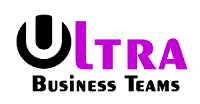Obtaining ISO certification is a significant achievement for any organization. It demonstrates a commitment to quality, environmental responsibility, information security, or other specific areas covered by ISO standards. However, the ISO certification process can be complex and demanding.
In this post, let’s take a detailed look at what ISO audit audits are and a few tips to navigate ISO audits and get certified.
What Is an ISO Audit?
An ISO audit refers to a systematic evaluation of an organization’s processes, procedures, and systems to determine their compliance with the requirements of an International Organization for Standardization (ISO) standard. ISO is an independent, non-governmental international organization that develops and publishes various standards to ensure quality, safety, efficiency, and environmental responsibility in different industries.
During an ISO audit, a trained auditor or audit team conducts a thorough review of an organization’s operations to assess its compliance with the specific ISO standard being audited. The purpose of the audit is to verify that the organization has implemented and maintained the necessary processes and controls to meet the requirements.
Stages of an ISO Audit
The ISO audit process typically involves several stages:
Planning
Defining the scope, objectives, and criteria of the audit, as well as determining the audit team and schedule.
Document Review
The auditor examines relevant documentation, such as policies, procedures, records, and manuals, to assess compliance with the ISO standard.
On-Site Audit
The auditor visits the organization’s premises to observe operations, interview personnel, and gather evidence to verify conformity with the standard.
Findings and Reporting
The auditor analyzes the collected information, identifies any non-conformities or areas for improvement, and prepares an audit report.
Corrective Actions
If non-conformities are found, the organization must develop and implement corrective actions to address them.
Follow-Up
In some cases, a follow-up audit may be conducted to ensure that corrective actions have been effectively implemented.
Tips to Navigate ISO Audits and Get ISO Certified
Here are some tips to successfully navigate the ISO auditing process and get ISO certified without any problems:
Understand the ISO Standard
Before undergoing the certification process, thoroughly understand the specific ISO standard relevant to your organization. Understand its requirements, guidelines, and best practices. This knowledge will serve as a foundation for your certification journey and help you align your organization’s processes accordingly.
Establish Clear Objectives
Clearly define your organization’s objectives for obtaining ISO certification. Establish what you hope to achieve through certification, such as improved efficiency, enhanced customer satisfaction, or expanded market opportunities. These objectives will guide your efforts throughout the certification process and keep you focused on your desired outcomes.
Conduct a Gap Analysis
Perform a comprehensive gap analysis to assess your organization’s current processes and systems against the requirements of the ISO standard. Identify areas where you already comply and areas that require improvement. This analysis will provide valuable insights into the steps needed to bridge the gaps and achieve compliance.
Engage and Train Employees
ISO certification is not just a top-down initiative; it requires the active participation of every employee. Engage your staff by communicating the benefits and importance of ISO certification. Provide training and workshops to ensure everyone understands the ISO requirements and their roles in meeting them.
Document Processes and Procedures
Accurate and well-documented processes and procedures are vital for ISO compliance. Create an efficient system for documenting your organization’s processes, including policies, work instructions, and forms. Ensure that these documents are easily accessible to employees and regularly updated to reflect changes or improvements.
Conduct Internal Audits
Regular internal audits are an essential part of the ISO certification process. Conduct periodic assessments of your organization’s processes, systems, and compliance with the ISO standard. Internal audits help identify areas of non-compliance or improvement opportunities and allow you to address them proactively before the certification audit.
If you are looking for a reliable ISO consulant in the United States, get in touch with BCS.
The ISO consultancy helps businesses from various industries in the United States with various types of ISO certifications, including ISO 9001 healthcare certification, ISO 14001 environmental management certification, ISO 13485, ISO 45001, API Q1, AS9100, and more. They have a team of experienced consultants who guide their customers throughout the entire process of getting ISO certified.
Contact them now for further information.










